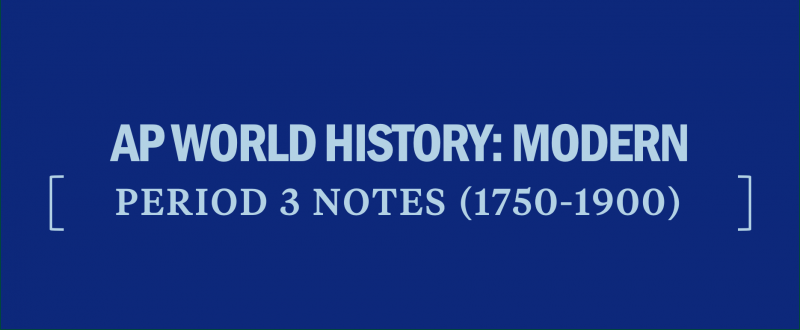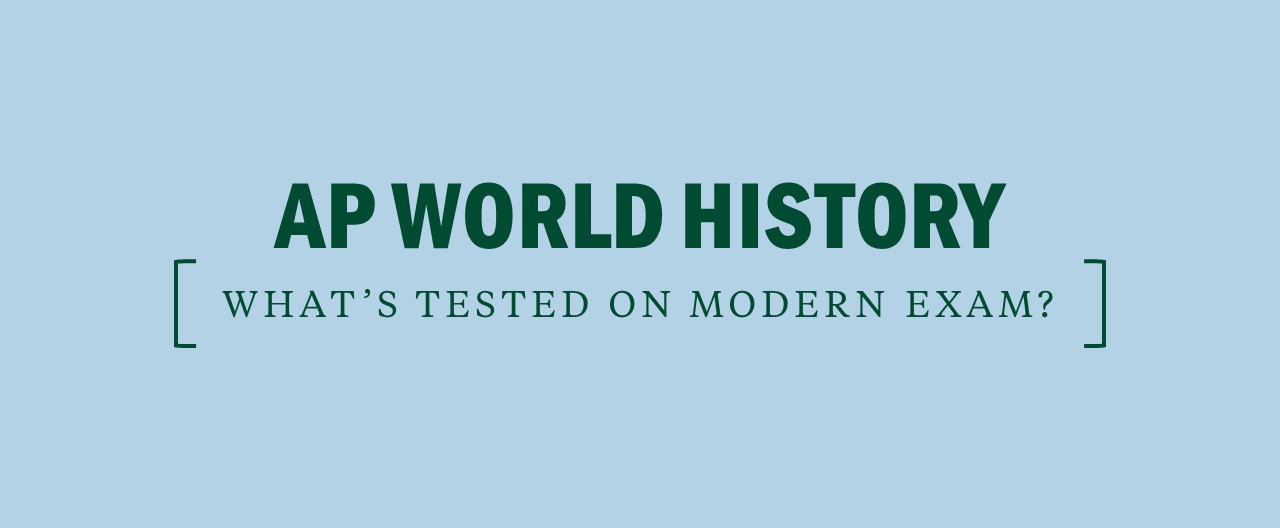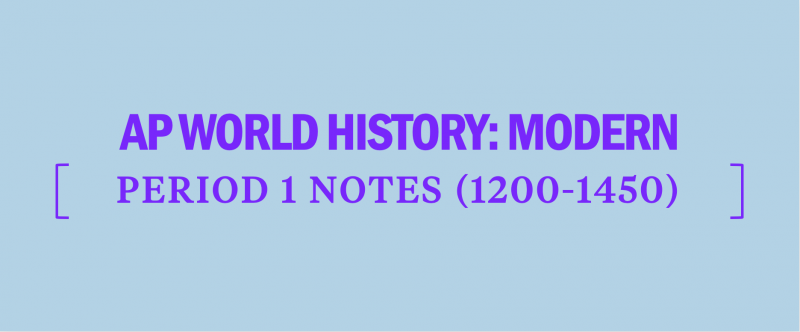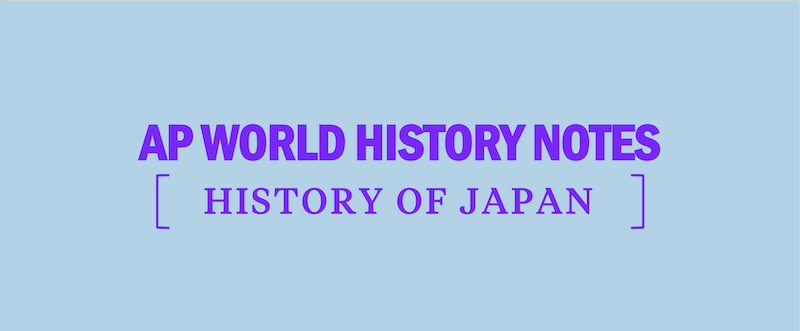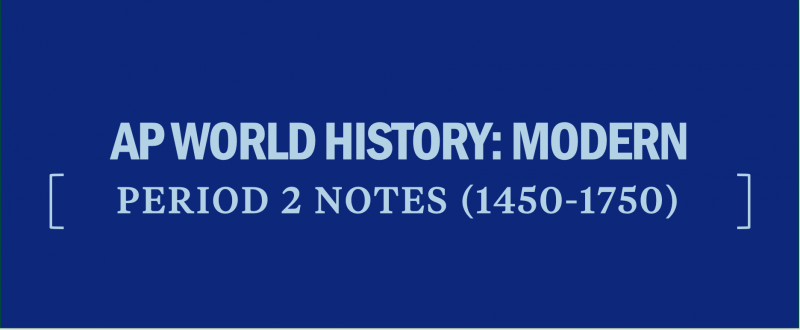AP World History: Modern—Period 3 Notes (1750-1900)
AP World History: Modern Key Takeaways — Period 3 (1750-1900)
- The ideals of the Enlightenment inspired a wave of independence movements and revolutions throughout the Americas and Europe that promoted liberty and other democratic values. These new governments, however, extended full legal and political rights to only a limited class of people.
- The concept of the nation-state become a new aspect of cultural identity. In Europe, nationalist movements led to the unification of Italy and Germany. In other parts of the world, such as Russia, China, Japan, and the Ottoman Empire, nationalism prompted rebellions and reform movements.
- Industrialization increased economic interdependence between different regions of the world. Industrialized nations in Europe and the Americas sought to colonize portions of Africa and Asia to obtain raw materials and to open up new markets for trade.
- Populations grew, and many people migrated to cities in search of work in factories. Wage laborers were more desirable than forced labor in this new market-driven economy, so slaves and serfs were emancipated. The working class emerged, and workers organized into unions to advocate for improving dangerous and oppressive working conditions.
- New political and economic ideologies emerged in response to industrialization. Liberalism promoted limited government interference with the free market, whereas socialism and communism advocated for government regulation and increased political power for the working class.
- Women gained some economic opportunities as a result of industrialization, but were paid considerably less than their male counterparts. These new economic opportunities and Enlightenment ideals prompted women to fight for political rights as well, though these rights would not become realized until the twentieth century in most parts of the world.
KEY TERMS: PERIOD 3 (1740-1900)
Remember that the AP World History exam tests you on the depth of your knowledge, not just your ability to recall facts. While we have provided brief definitions here, you will need to know these terms in even more depth for the AP exam, including how terms connect to broader historical themes and understandings.
REVOLUTIONS AND INDEPENDENCE MOVEMENTS
- Enlightenment: Post-Renaissance period in European history devoted to the study and exploration of new ideas in science, politics, the arts, and philosophy.
- American Revolution: Conflict between American colonists and the British government, caused by growing resentments based on taxation and governing policies; Revolutionary War lasted from 1775 to 1781; ultimately ended in American independence and the first large-scale democracy since ancient Greece.
- French Revolution: Conflict between the Third Estate (peasants, townsfolk, and merchants) and the First and Second Estates (clergy and nobility, respectively) for political and social control; inspired by the American Revolution; various political factions competed for control of the government, with Napoleon Bonaparte ultimately seizing power in a coup.
- Maroon: Term for a nineteenth-century escaped slave in the Americas who established his or her own settlement away from plantations, causing tensions with colonial authorities; term is also used to describe the slaves’ present-day descendants.
- Haitian Revolution: Slave revolt that lasted from 1791–1804 led by Toussaint L’Ouverture; the former French colony of Saint-Domingue became the independent nation of Haiti, the second independent nation in the Western Hemisphere and the world’s first black republic.
- Latin American independence movements: Movements against Spanish colonial rule in Central and South America in the 1810s and 1820s, which led to the independence of every nation in the region; inspired by the success of the Haitian Revolution; key leaders were Simón Bolívar, José de San Martín, and Bernardo O’Higgins.

